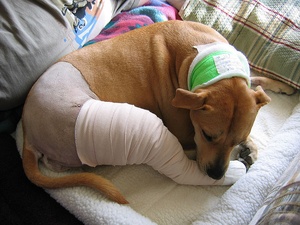An earlier article discussed congenital vs. adult onset conditions. There seems to be some confusion as to the importance of the timing of disease symptoms. I wanted to expand on the topic that we refer to as “age of onset”, or the age in which a condition starts to show symptoms. Breeders may initially only be concerned with conditions that are congenital – present at birth. While I agree that genetic screening for congenital disorders is important, screening for adult-onset conditions is also important, and should not be ignored.
Testing for congenital genetic conditions is probably a “no-brainer” for most breeders. Genetic testing gives someone the knowledge to selectively breed dogs in order to reduce (or even eliminate) genetic diseases in the newborn pup. As you may already know, breeding takes time and considerable resources. Most breeders are also emotionally invested in the dogs they breed. For many, it’s not just a hobby; it may be a full-time job or even a way of life. Congenital diseases may cause a lot of discomfort to the affected pup, and can cause anxiety for everyone involved. The cost of medical care may ...






